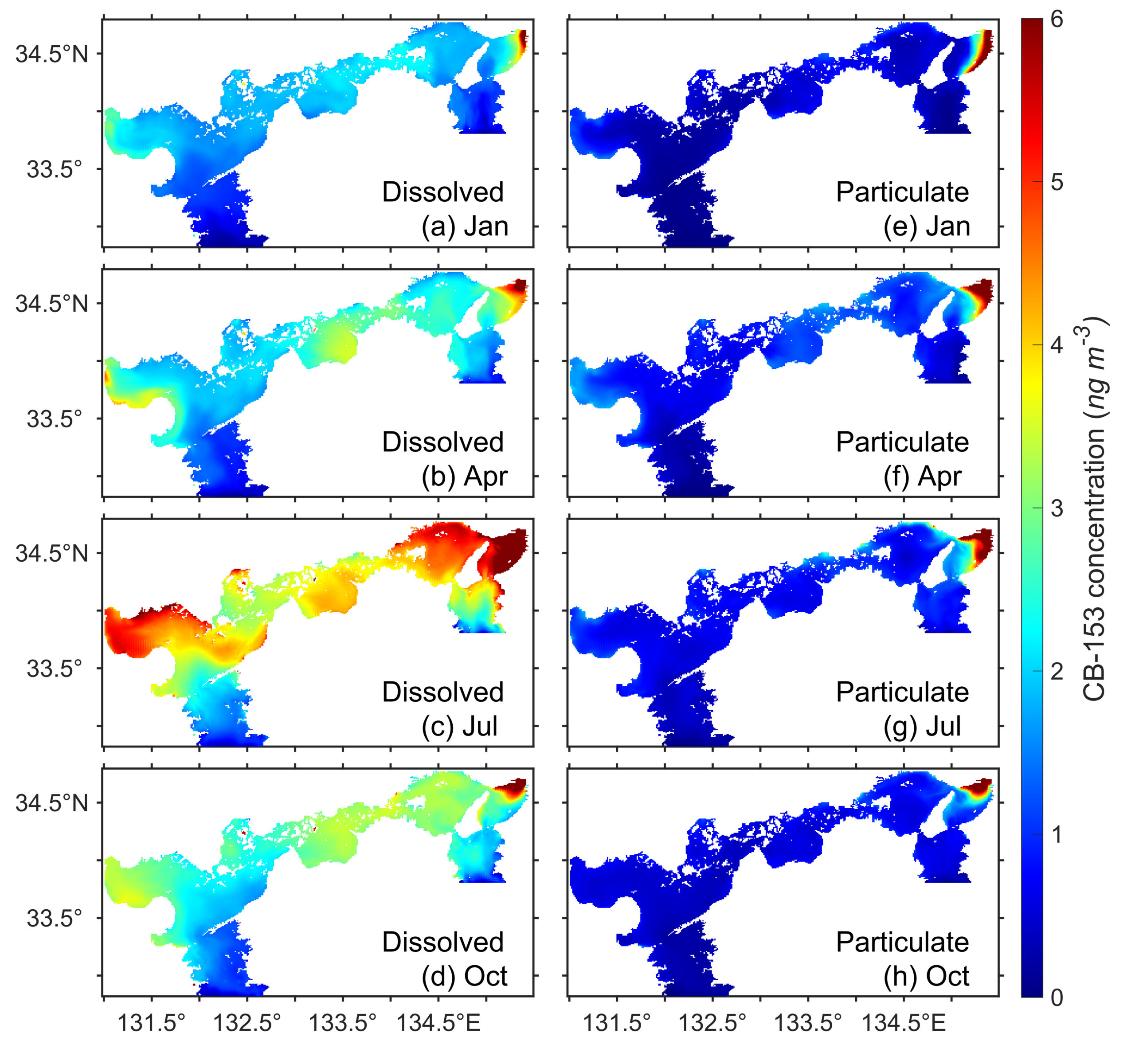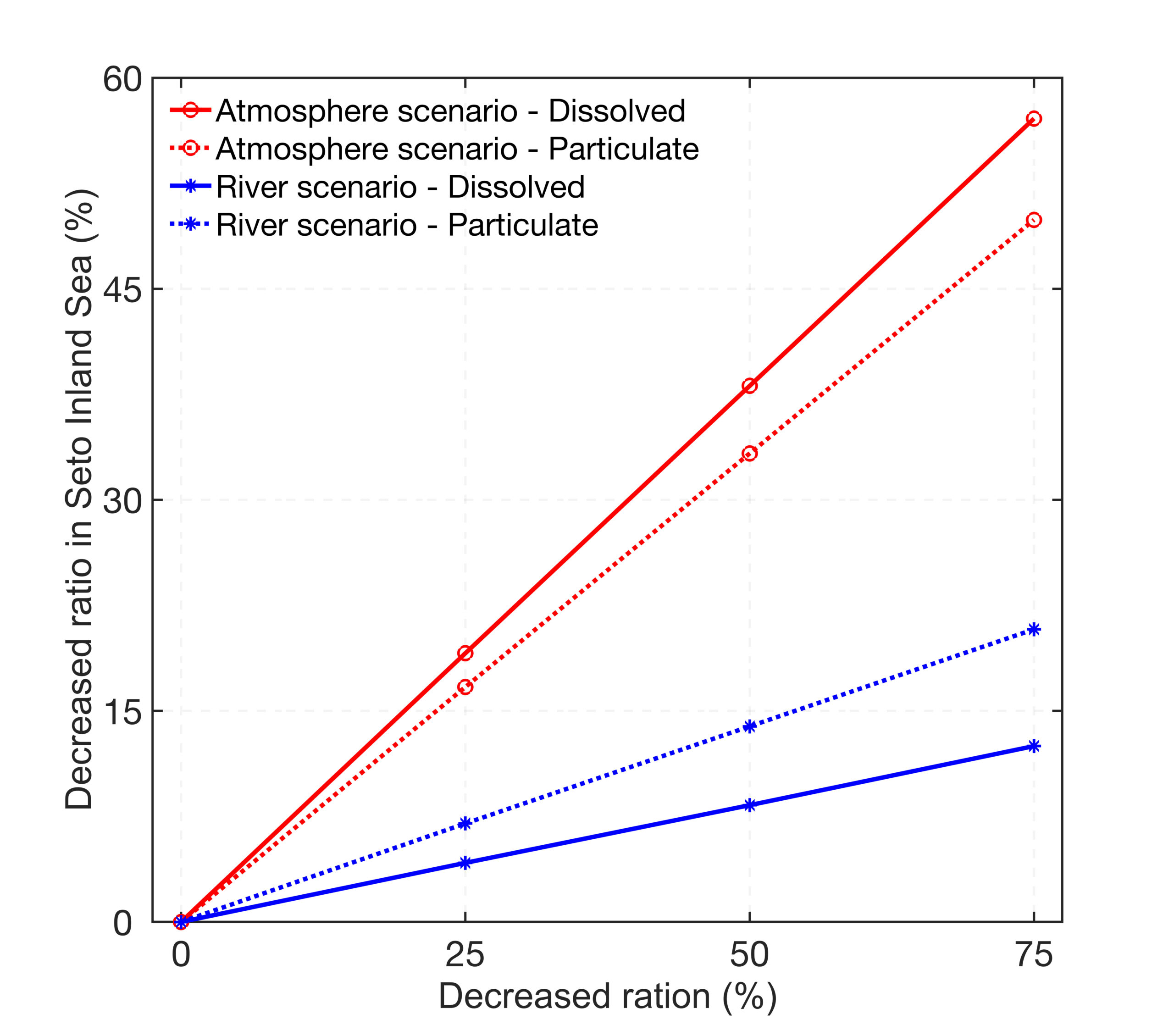PCB in the Seto Inland Sea: Spatial and seasonal variations, Sources, and Responses
Spatial and seasonal variations of polychlorinated biphenyl (CB-153) in the Seto Inland Sea and its response to declines in atmospheric and riverine input
Osaka Bay had much higher CB-153 concentrations than other areas of the Seto Inland Sea. The atmosphere was the largest source, while river discharges served as a secondary source for the CB-153 in the Seto Inland Sea. With the decline of CB-153 input from the atmosphere, the concentration decreases significantly over the Seto Inland Sea except for Osaka Bay. On the other hand, Osaka Bay responds to the decline of CB-153 input from rivers.
Polychlorinated biphenyls (PCBs) are a traditional and ubiquitous group of persistent organic pollutants (POPs). CB-153 is one of the congeners of PCBs. The atmospheric and riverine inputs are recognized as important sources of CB-153 in the coastal or shelf sea. According to the Long-term monitoring by the Ministry of the Environment of Japan, CB-153 concentrations in rivers and the atmosphere have a significant decreasing trend in recent years, which raises a necessity for a quantitative analysis of the responses of CB-153 concentrations in coastal seas to this decline.
A hydrodynamic-ecosystem-PCB coupled model was developed to investigate the spatial and seasonal variations of CB-153 in the Seto Inland Sea and its responses to the decline of CB-153 input from rivers and the atmosphere. The model simulated dissolved and particulate (phytoplankton- and detritus-bound) CB-153 and their physical and biogeochemical behaviors.
Model results indicated that the dissolved CB-153 concentration peaked in July, which was caused by atmospheric and river input. The particulate CB-153 peaked in April when the phytoplankton uptake was largest due to the spring phytoplankton bloom, and in July when the dissolved CB-153 concentration was highest. High CB-153 concentrations usually appear along the coast of the Seto Inland Sea. Osaka Bay showed the highest annual mean concentration of 10.3 ng m-3 while the other areas had an annual mean of 2.9 ng m-3. The CB-153 budget calculation revealed that the atmospheric input was the largest source (69%), which included the air–sea diffusion process (61%) and wet deposition (8%), while river discharges served as a secondary source (31%).
Three scenario experiments demonstrated that the decline of atmospheric CB-153 concentration dominated the CB-153 decrease in most regions of the Seto Inland Sea, except for Osaka Bay, where the CB-153 decrease depended on the decline of riverine CB-153 concentration. Dissolved and particulate CB-153 concentrations exhibited different responses to the reduction in the atmospheric and riverine concentrations of CB-153. In particular, dissolved CB-153 is more sensitive than particulate CB-153 to the decrease of atmospheric CB-153 concentration, but particulate CB-153 is more sensitive than dissolved CB-153 to the decrease of riverine CB-153 concentration.
Reference URL: https://www.sciencedirect.com/science/article/pii/S0013935125012514
Bibliographic Information
Spatial and seasonal variations of polychlorinated biphenyl (CB-153) in the Seto Inland Sea and its response to declines in atmospheric and riverine input,
Yaxian Li, Xinyu Guo, Qian Leng, Min Yang, Yu Bai, Xueting Zhao,
Environmental Research, 2025, 281, 122000,
doi: 10.1016/j.envres.2025.122000.
Fundings
- Moonshot Research and Development Program (Grant Number JPNP18016)
- New Energy and Industrial Technology Development Organization (NEDO)
Media
-

Bathymetry of the Seto Inland Sea and conceptual scheme of the model.
(a) Bathymetry of the Seto Inland Sea. The dots represent the position of river mouths. The black lines represent the Bungo and Kii Channels. (b) Conceptual scheme of the coupled model for CB-153 simulation. Ca, Cw, Cwp, and Cwd are the CB-153 concentrations of the gaseous phase, dissolved, phytoplankton-bound, and detritus-bound, respectively.
credit : Xinyu Guo, Ehime University
Usage Restriction : Please get copyright permission -

Distributions of CB-153 concentrations in the Seto Inland Sea.
Horizontal distributions of CB-153 concentrations of (a-d) dissolved and (e–h) particulate CB-153 in four representative months for the season.
credit : Xinyu Guo, Ehime University
Usage Restriction : Please get copyright permission -

CB-153 decreased the ratios in the Seto Inland Sea.
CB-153 decreased the ratios in the Seto Inland Sea under the atmospheric and riverine scenarios.
credit : Xinyu Guo, Ehime University
Usage Restriction : Please get copyright permission
Contact Person
Name : Xinyu Guo
Phone : +81-89-927-9824
E-mail : guo.xinyu.mz@ehime-u.ac.jp
Affiliation : Center for Marine Environmental Studies (CMES), Ehime University

